I have been thinking, reflecting, and stitching together a logic.
One that addresses the comments on long copy, that I often get from clients.
You can, of course, settle this issue without ado
- The client out-clubs you and gets his/ her way
- You need the money, so you shut up, take the ego bruises as part of professional hazard, and do what is asked of you
- The brand suffers in the bargain. But the individual egos, that matter, are well protected. This is what plays out more often than not.
There must be a more elegant way to resolve this, right?
One which is a win for the client, win for the brand, and win for you?
This is what I wish to explain here.
Read on for the answers.
Content Index
- The usual objections to long copy
- I’ve a problem with these arguments…
- The issue is not with the scroll length…
- There are few insights…
- What’s the ideal length for copy?
- The 5 Stages of Customer Awareness
- The 5 Stages of Market Sophistication
- Where does long copy work?
- Where does short copy work?
- Insights for Long vs Short Copy
- The Borrowed Structure from Storytelling
- What is the problem with online copy?
The usual objections to long copy
Oh no, people here don’t read so much.
We must compress everything into a paragraph.
Nobody has the time to read, much less scroll.
We live in an instant results world. Let’s use bullets to describe this.
Let’s make all the points we have into icons.
I’ve a problem with these arguments…
These very folks watch 30-min long serials.
Many endure 90-minute movies. Yep, without noticing how time flies.
Most CEOs I know scroll on FB and Instagram. Without complaint.
Many top executives read 350 page tomes. While biting their nails off.
Some even waft through ecommerce stores online with infinite scrolls. Without as much as a whimper.
So how is that something that’s common in some parts of your web life becomes anathema in yet others. Weird? Inexplicable?
The issue is never with the scroll length…
It’s with the quality of content that makes you scroll.
If there is surprise, tension, interest, variety, then you will scroll.
Copy uses techniques to achieve this. Imagery laden words. Sensory words. Short sentences punctuated with longer ones. Contrast in text, status quo vs transformation, or pain vs solution.
Design too uses column variations, color, space, contrast, images, icons and breaks in visual rhythm to call for attention.
The scroll itself is irrelevant.
When interest, variety are absent, your incentive to scroll is taken away.
Even intelligent folks miss this observation when they focus on the scroll and not on the content.
There are few insights…
- Clients, or copywriters are always free to comment, but they are invariably wrong.
- Most are cognitively biased. They comment without the benefit of testing or understand the bias involved. The observations, if you could call it that, cannot stand scrutiny.
- Most have no clear background as to when copy should be longer or shorter. Under what circumstances do you get away with a short copy? Or when does long copy become relevant?
- Most read very boring copy on websites. You see those carefully couched, in what is euphemistically known as, business language.The prevalent notion is that “Business Language” is some sort of self-imposed straitjacket with strict do’s and don’ts.The tense and compound sentences will have your knickers in knots.
It’s prose robbed of all rhythm, cadence, mystery and soul.
So there is a rub off from poor copy that adulterates opinions even when there’s good copy around.
If clients and copywriters can understand this well, then they can defend copy with plausible arguments. Or in the best case scenario, test short vs long copy.
Hopefully, data will prevail over the club.
What’s the ideal length for copy?
There are two factors here. And it’s neither the client, nor the copywriter.
A direct response copywriting genius, Eugene Schwartz, has addressed this messaging problem in 1966.
You can see it in his book: Breakthrough Advertising.
The two factors are:
- The Stage of the Customer Awareness
- The Sophistication of the Market
Let’s expand both to understand how this impacts messaging.
The 5 Stages of Customer Awareness
There are 5 stages of awareness. There is an appropriate messaging tactic for each.
In most industries, you will have folks spread across from one end of this awareness spectrum to the other.
Your job is to find the most addressable segments and how to persuade them.
| Awareness Stage | Status of the Customer | The Message Tactic |
| Unaware | Not aware, or in denial of the problem | Reveal a secret, or tell a story |
| Problem Aware | Aware of the problem but not solutions. Understands need but has no desire. | Highlight pains, anxieties and dovetail your solution as the balm to those pains |
| Solution Aware | Aware, perhaps using another solution but not yours | Use proof: case studies, testimonials to increase credibility |
| Product Aware | Completely aware of your solution vs others | Use product comparison and head-to-head or explain why your brand |
| Most Aware | Just waiting for the right price, offer to buy your solution | Craft the offer, price to make it look juicy |
Add to this layer, another to do with the degree of market sophistication.
The 5 Stages of Market Sophistication
| Market Sophistication Stage | Status of the Customer | The Message Tactic |
| First to market | Prospect has not seen a product like yours – new tech or breakthrough | Sell the concept first and then the product. Problem/ Solution approach. |
| 2nd to Market | Prospect has seen a few products similar to yours. Still new. | Sell the concept first and then the product. Problem/ Solution approach. |
| Lots of Claims | Prospect is exposed to and has heard many claims. Maybe even tried out a few. | Problem Solution or Secret. Identify mistakes with current solutions and amplify this. |
| Lots of mechanisms | Differentiation here is in the process. Prospect has heard of a few processes | Amplify your process vs those of others. |
| Market Saturated | Over-exposed to marketing. Low believability. | Just make an offer with the price. |
When you combine Customer Journey with Market Sophistication you get the messaging nuances you need to succeed.
For example, the Website Design business is now both crowded with claims and boasts of many mechanisms.
The strategy for Web Designers then is to move to niches.
Eg Web Design for Dentists.
Web Design for SaaS businesses.
Web Design For Realtors.
Or focus on the unique mechanism
Clarify Your Message with StoryBrand
I don’t do websites. I do funnels.
This is something which is already in vogue now.
This is one clue that market sophistication gives us for crowded market categories.
When you use the Customer Journey to write Landing Pages you will end up with long copy pages. Except in market saturated product categories.
Now let’s understand where long copy works and where short does.
Where does long copy work?
- Detail your product
Great for high involvement, informational products.This is where customers need more information about product features, specs, use cases, etc, before they buy. The risk is high, and the need to consume information is also high.
Eg, Software, SaaS, home appliances, and business services.
- Tell a story
Stories have long fascinated us humans.Our myths and cultural moorings are shaped by stories and lore.The more knowledgeable copy folks have embraced storytelling to persuade.
More on storytelling, later in this article.
- Pack in Social Proof
Robert Cialdini was the one of the first to write about the importance of social proof.It’s just one of the 6 principles from his Book: Influence, that is used in most online communications today: Reciprocity, Commitment & Consistency, Authority, Liking, Social Proof, Scarcity.
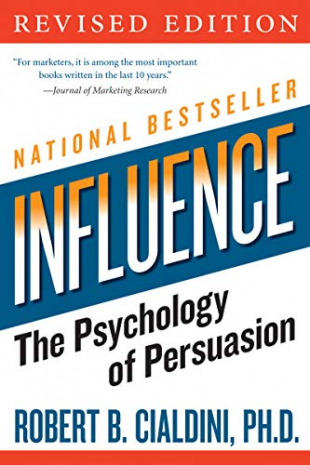
- Today, storytelling combines with social proof manifest as Case Studies and Testimonials, Accreditations, etc.
- Combine different stages of the JourneyMany copywriters telescope the stages of Customer Journey while writing copy. That is, they cover the stages, from Problem Aware all the way to Most Aware, in a single landing page.This is when the copy gets long. But it does the job.
Problem AwareCheck the Landing Page at ISET AI & ML Programs. This covers Problem Aware to Most Aware Stages.
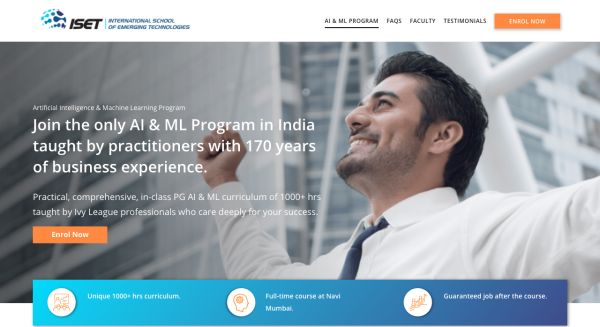
Or the one at Modern Properties, Kolkata. This covers Problem Aware to Most Aware Stages.
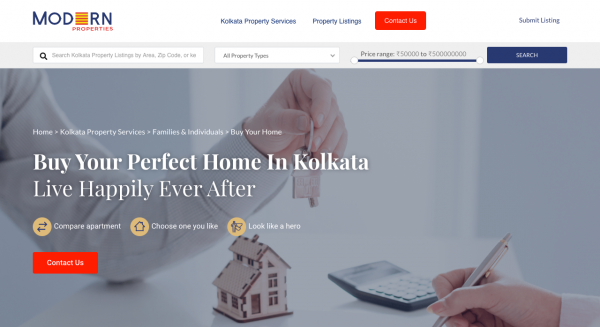
But there are exceptions to this norm.
You can have a Landing Page covering just Solution Aware to Most Aware, and another from Product Aware to Most Aware stages.
Solution Aware
One of the better examples of a Solution Aware Page packed with social proof is Basecamp Project Management.
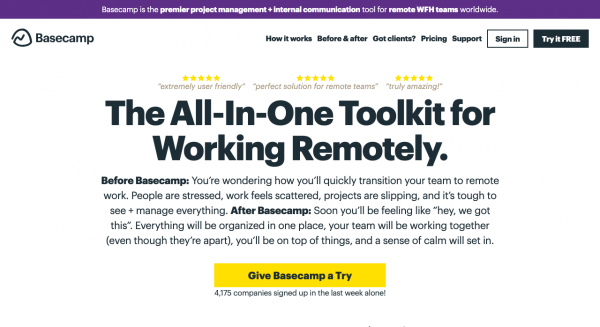
Product Aware
In the Product Aware stage, many customers veer towards the market leader.
Me-too products understand this very well. So they try to hijack prospects at the point when they enter a market leading brand name in the search box at Google.
Eg, try Intercom in Google Search and this is what shows up.
4 competitors of Intercom, advertise that they are better than Intercom.
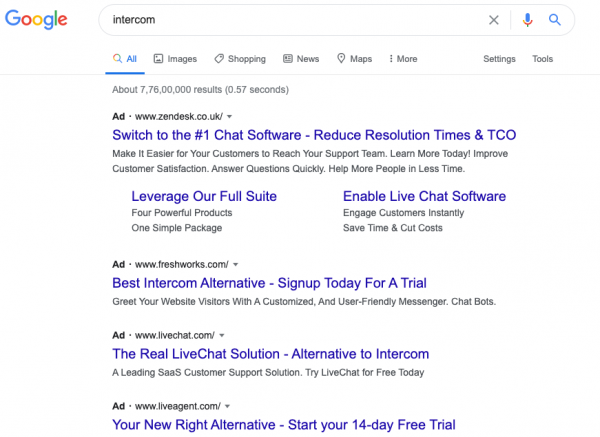
In the Landing Page below, Help Scout, an Intercom competitor, tries to hijack customers who search for Intercom with a better promise.
The Landing Page focuses on direct comparison of price and features of Intercom with Help Scout.
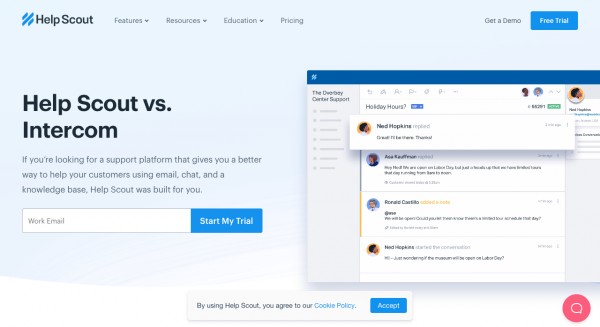
- Unaware
Tackling the Unaware stage is usually left to those who are willing to educate the market. There are some nuggets here.Once upon a time, this was a tactic only used by the market leaders, in a category.Today, with the costs of publishing plummeting, this is within the reach of almost everyone and becomes a worthwhile strategy for even small marketers.I remember, when I used to work in Nexus Equity Advertising, a long time ago, we created a Recruitment Ad Campaign for Times of India.The objective was to increase the use of ad space by agencies and advertisers.The idea was to teach them how to write better recruitment ads. The late M Raghunath was the architect of this campaign.
We prepared a Recruitment Ad Writing Booklet that helped agencies and clients see more value in ads. The book had before/ after examples of how to write better ads leading to more qualified talent, for advertisers.
This was given away FREE to almost all top agencies and clients by the Times of India. This was content marketing circa 1992.
Within a few months, the ad space utilization in the Ascent, the TOI supplement for Jobs, shot up by 3X.
This is a great example of transforming the Unaware to the Most Aware, using education as the storyline.
- Answer Objections
Selling is essentially about answering questions in the customer’s head.FAQs provide the answers. Persuasion is improved. Objections are tackled. Misnomers are laid to rest.
Look at how FAQs are used as part of the Landing Page at Pigtail Pundits for the Webinar Registration Landing Page.
Interestingly, the FAQs here were added later. This was because we got some responses from prospects in social media.
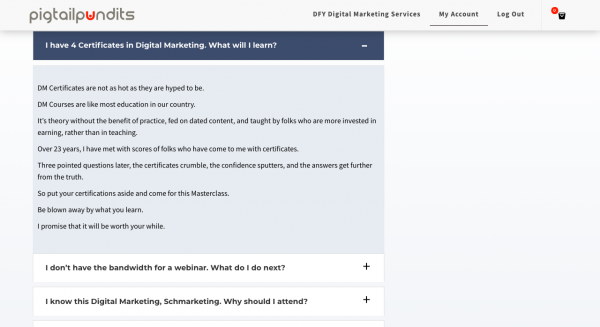
The Results of Adding FAQs to the Landing Page
The conversions jumped from 6.4% without FAQs to 9% with it.

Where does short copy work?
- For low-price items
Requires less persuasion to sell. Think convenience products, impulse purchases, both of which require very little persuasion.Check out the ad for Old Spice.

But soap ads weren’t always short copy driven.
In the 1950s, we see examples of long copy in soap ads. So market maturity is clearly at play here.
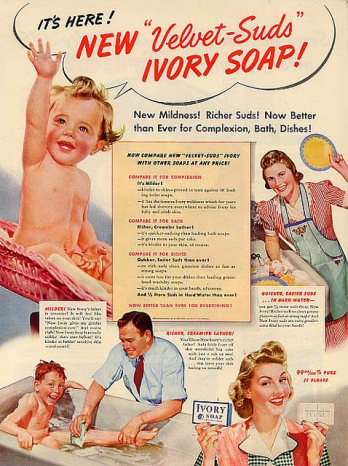
For market saturated products, or repeat purchases
Here the customers are completely clued in to the product benefits, pains, alternatives, claims, mechanisms… the works.
All that they need is the price and any offer along with it to buy.
Short, or no copy will do well here.
Take a look at the ad for commodities with just the price and the packshot by Big Bazaar below. For these, you don’t even require a copywriter.
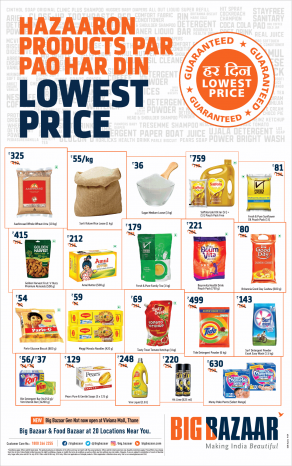
High involvement, transformational products
Think perfumes, cosmetics, market saturated, claim-absent products.
Think of mature product categories – say scooters and motorcycles where there are no features worth talking about.
So you come with a song and dance sequence, stitched with emotional portrayals of people enjoying the product – Hamara Bajaj, Hero Splendour.
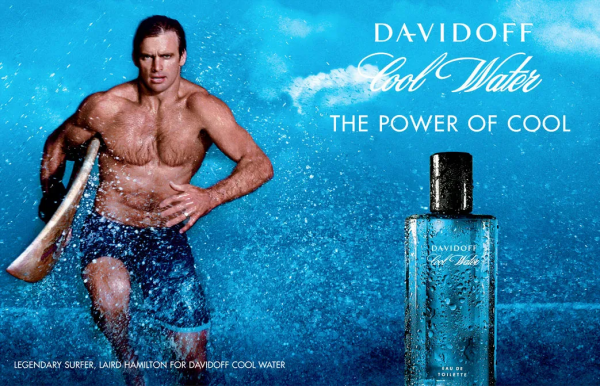
Insights on Long vs Short Copy
- Copy length is decided by the stage of the customer journey. There are specific contexts where long copy and short copy work.
- This stage is to be read in conjunction with the stage of market sophistication for divining the ideal length of messaging.
- There are specific types of messaging to focus on for customer journey and market sophistication stages
On QuickSprout, there’s an interesting recount of how long copy, 20 times longer than the test, improved conversions by 30%. The page was created by Conversions Rate Experts and tested for CrazyEgg.
The Borrowed Structure from Storytelling
Copywriters use the very same structure for stories, as you’d find in the myths, movies and serials which are popular all over the world.
There’s a reason for this. From the dawn of time, we have been fascinated and intrigued by stories.
Stories are memorable whether it’s Aesop’s Fables, The Greek Tales, The Ramayana, or The Game of Thrones.
Joseph Campbell, a genius, studied all the ancient myths of the world and distilled it in his epic “Hero’s Journey“.
He gave the world the first formula, or structure for creating stories. This was in the 1940s.
Star Trek, was the first successful movie based on Campbell’s formula drawn from the myths.
These very formulas have now seeped into soap operas and every day television not to mention our blockbusters – Bollywood, Hollywood, the works.
Copy which does not use a story structure can follow any format, but it won’t be as effective. You’ll see why below.
There are few constructs in storytelling, brand or otherwise, that we need to understand.
This is how storytelling in copy works. It introduces the same tensions that stories do for brands.
Donald Miller’s StoryBrand is one of the more famous frameworks. But StoryBrand draws heavily from the PASTOR framework Ray Edwards.
Michael Hauage, and Kyle Gray also have story formulas to their names.
The direct response ad frameworks today combine storytelling with psychology, advances in neuroscience, learnings from behavioural psychology, and more to effect better conversions on websites.
What is the problem with online copy?
While the awareness is increasing about the principles of direct response advertising and storytelling, good copy is still few and far between.
The large majority of brands, agencies and professional writers still don’t use copy frameworks or structured selling. Lazy!
The large majority still believe in the myth of short copy without adequate testing.
That’s a pity because if you test one format vs the other you will know the difference.
Head over to Swiped and check out some of the best examples of Direct Response Ads that have clocked millions of dollars for advertisers.
The other distress is the argument about long vs short copy that comes from a society fed on instant gratification.
The give-it-to-me-in-a-nutshell-types who have little knowledge or respect for what works and what doesn’t, but who are always full of untested opinions.
The folks at Basecamp and Amazon understand the importance of testing.
So do Moz, CXL, Conversion Rate Experts and CopyHackers.
These folks test their Landing Pages often. They tweak it based on data and analytics, not from some off-the-hip pronouncements.
For your website and Landing Pages?
Get in touch with us and we’d be happy to help.
Do and share this article with friends and colleagues who’d find it useful.

